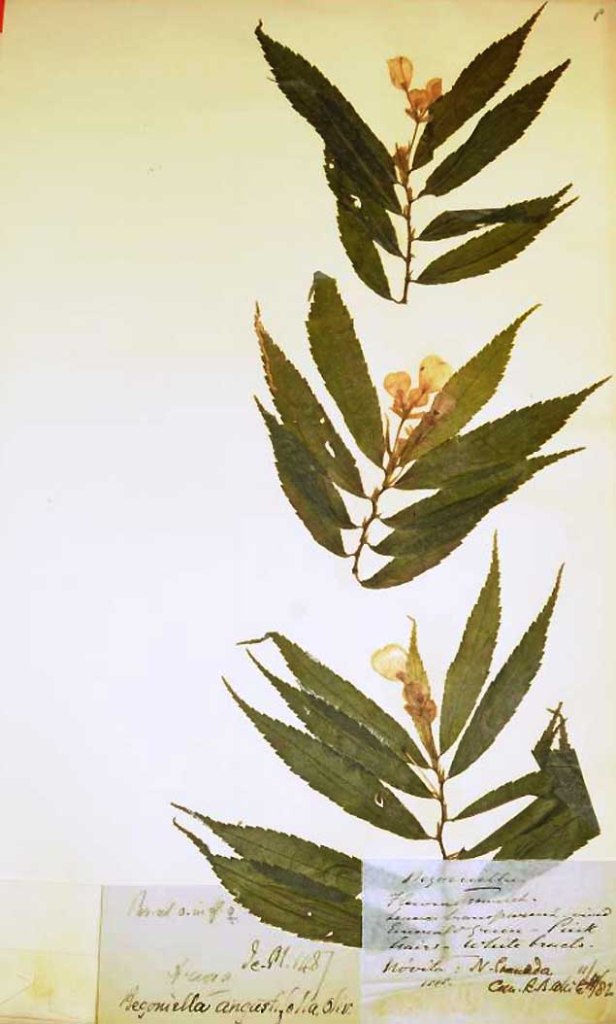
La plante a été découverte en Colombie par Robert B. White près de Nóvita dans la région de Choco en 1882 (les autres informations sont illisibles). Le type conservé dans l’herbier à Kew est accompagné de croquis annotés de la main de R. White et de celle de D. Oliver.
Toutefois, les conditions de conservation avec peu de lumière et l’interdiction d’utiliser un flash ont rendu difficile la prise des photos.
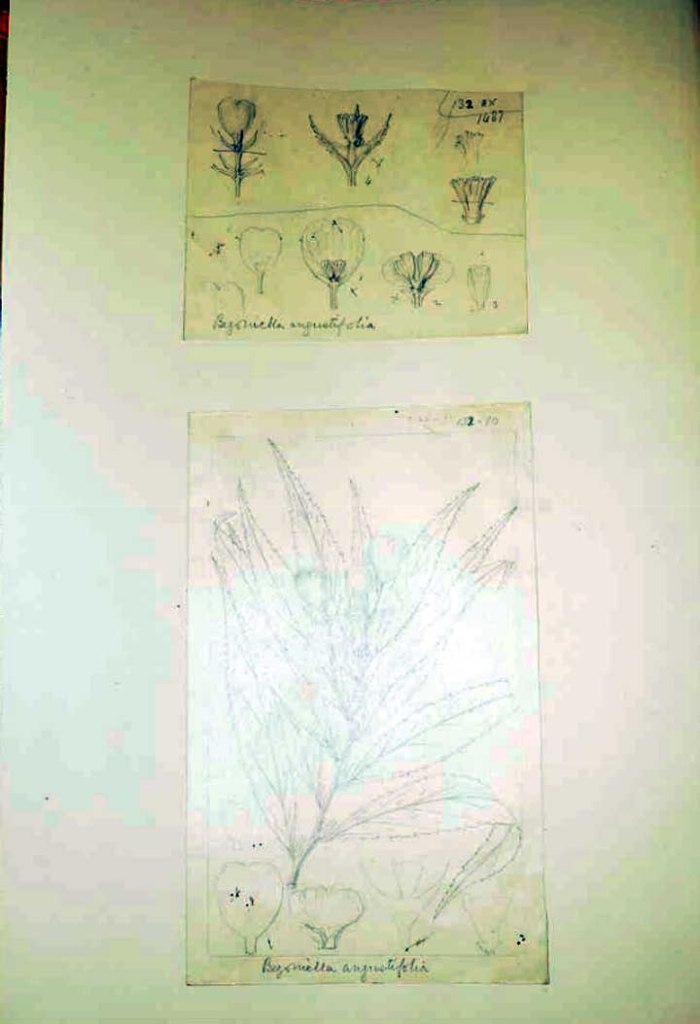
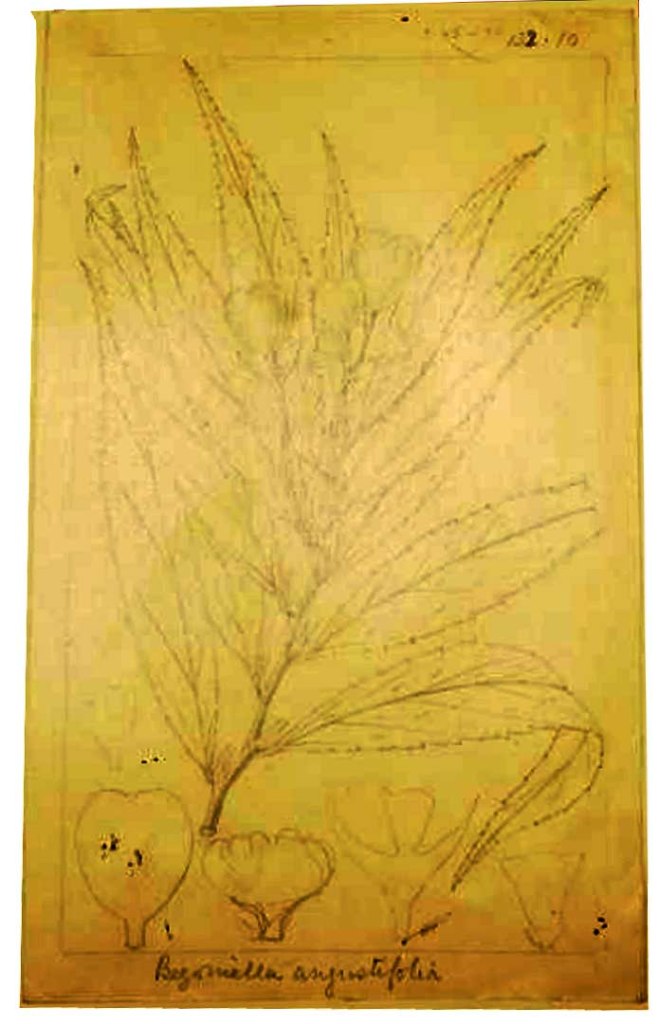
La nouvelle espèce a été dénommée Begoniella angustifolia Oliv. et décrite en 1885 par Daniel Oliver (1830-1916) dans Hooker’s Icones Plantarum volume 15, pages 68, figure 1487.
L’épithète spécifique faisait alors référence à l’étroitesse des feuilles.
![]()
![]()
En octobre 1946 dans Caldasia volume IV, numéro 18 pages 208 et 209 (Contributions from the Gray Herbarium of Harvard University ) L.B. Smith et B. G. Schubert reprennent et confirment ces informations, sans avoir vu le type de la plante.
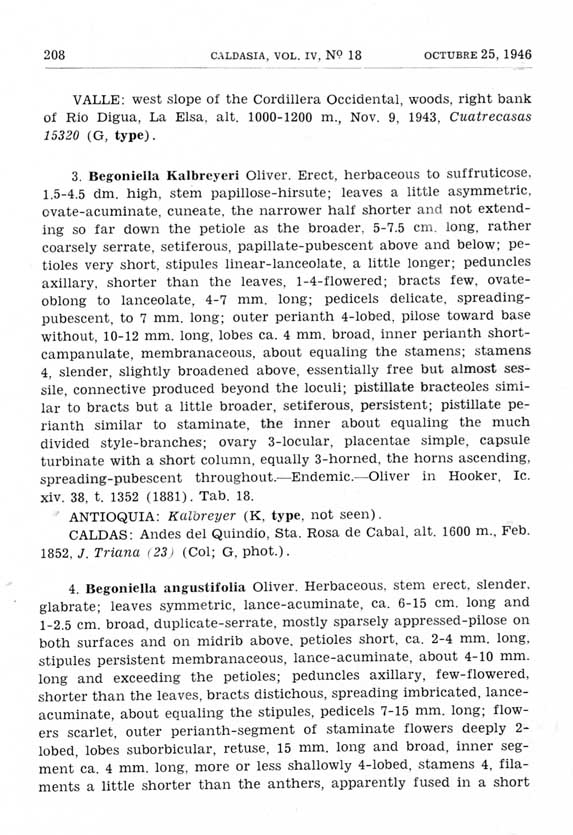
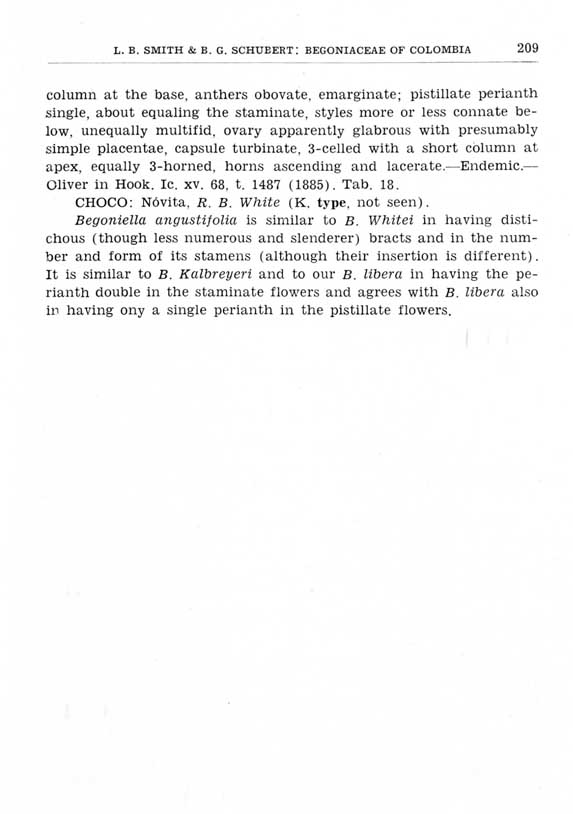
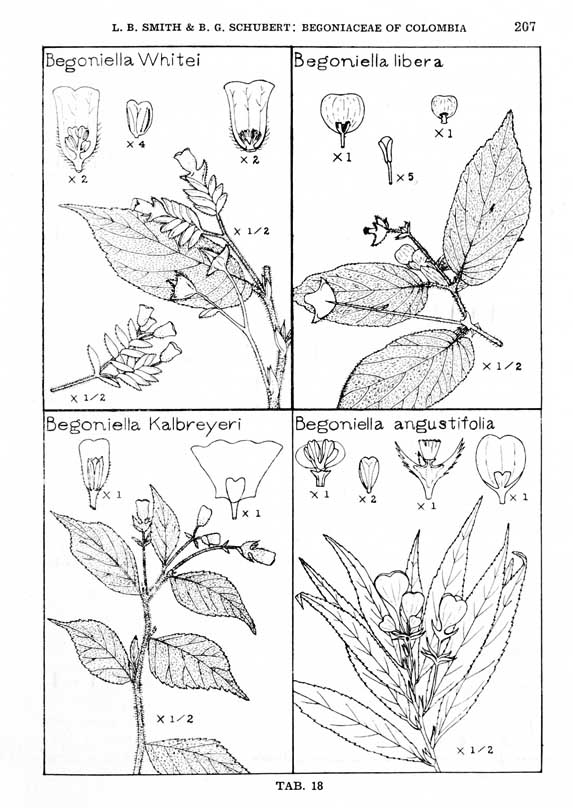
En 1955 Lyman Bradford Smith (1904-1997) et Bernice Giduz Schubert (1913-2000) ont décidé de fusionner le genre Begoniella dans le genre Begonia, la plante a donc été renommée. Mais Begonia angustifolia Blume existait encore (ils ont décidé plus tard que ce taxons était un synonyme), et il y avait Begonia angustifolia A. DC., il fallait donc trouver une nouvelle épithète spécifique, ils choisirent Begonia irmscheri L.B. Sm. & B.G. Schub. dans Journal of the Washington Academy of Sciences numéro 45, page 112.
L’épithète spécifique est un hommage aux travaux sur les bégonias du botaniste allemand Edgar Irmscher (1887-1968).
L’espèce fait partie de la section Semibegoniella.
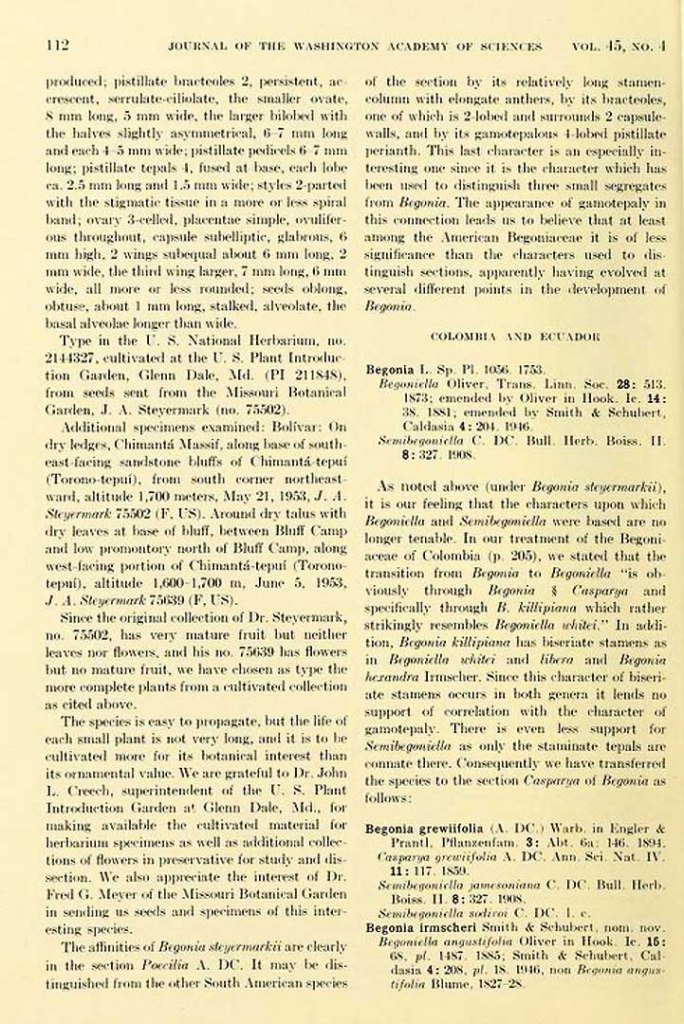
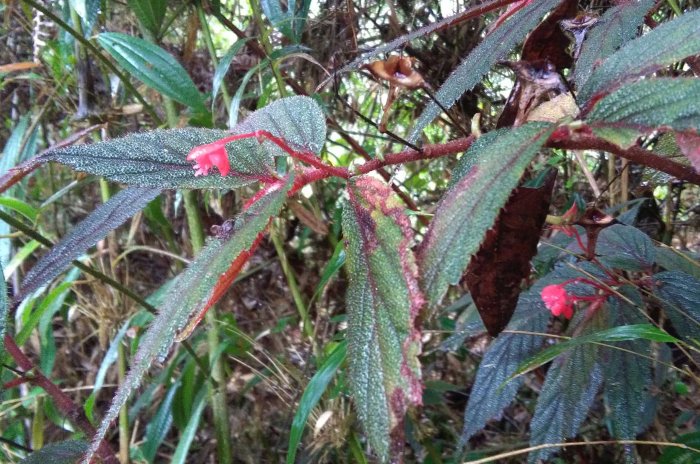
Begonia irmscheri ressemble à B. oliveri par le fait qu’il possède des bractées distiques (bien que moins nombreuses et plus minces) et par le nombre et la forme de ses étamines (bien que leur insertion soit différente).
Il en va de même pour B. kalbreyeri et B. libera car le périanthe est doublé dans les fleurs mâles et il est en accord avec B. libera également de n’avoir qu’un seul périanthe dans les fleurs femelles.

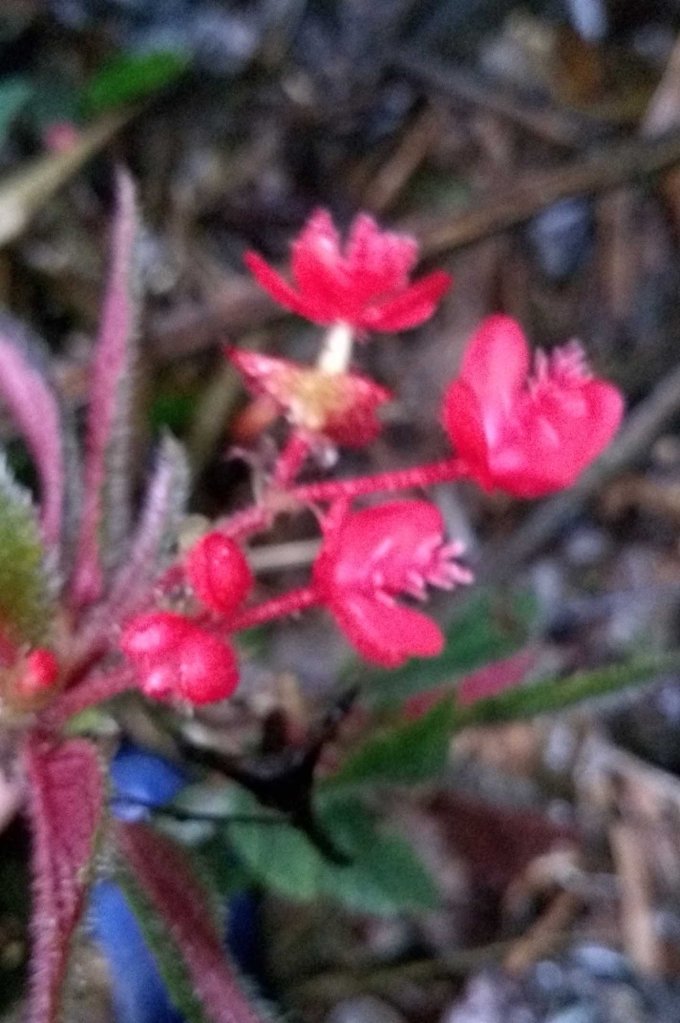
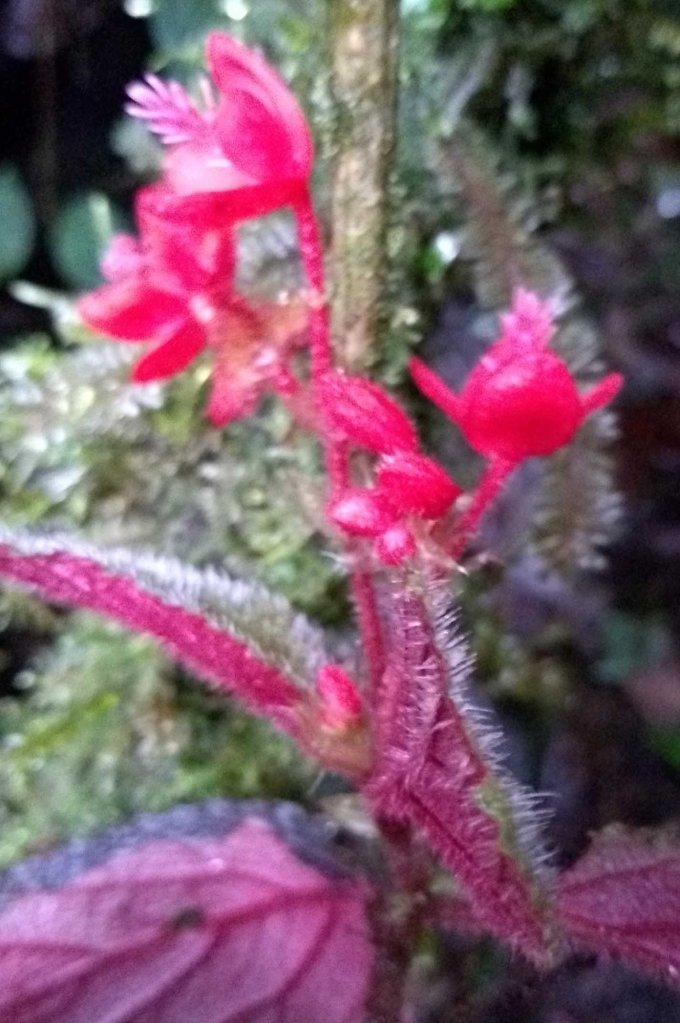
The plant was discovered in Colombia by Robert B. White near Nóvita in the Choco area in 1882 (other information is illegible). The type preserved in the herbarium at Kew is accompanied by sketches annotated by the hand of R. White and that of D. Oliver.
However, the conditions of conservation with little light and the prohibition to use a flash made it difficult to take pictures.
The new species has been named Begoniella angustifolia Oliv. and described in 1885 by Daniel Oliver (1830-1916) in Hooker’s Plantarum Icons Volume 15, pages 68, Figure 1487.
The specific epithet then referred to the narrowness of the leaves.
In October 1946 in Caldasia Volume IV, Number 18, pages 208 and 209 (Contributions from the Gray Herbarium of Harvard University) L. B. Smith and B. G. Schubert reproduce and confirm this information, without having seen the type of the plant.
In 1955 Lyman Bradford Smith (1904-1997) and Bernice Giduz Schubert (1913-2000) decided to merge the genus Begoniella into the genus Begonia, so the plant was renamed. But Begonia angustifolia Blume and Begonia angustifolia A. DC. still existed (they later decided that these taxa were synonyms), so it was necessary to find a new specific epithet, they chose Begonia irmscheri L.B. Sm. & B.G. Schub. in Journal of the Washington Academy of Sciences, number 45, page 112.
The specific epithet is a tribute to the works on the begonias of the German botanist Edgar Irmscher (1887-1968).
The species is part of the section Semibegoniella.
Begonia irmscheri resembles B. oliveri in having disttic (although fewer and thinner) bracts and in the number and shape of its stamens (although their insertion is different).
The same goes for B. kalbreyeri and B. libera because the perianth is doubled in the male flowers and it agrees with B. libera also to have only one perianth in the female flowers.

Une réflexion sur “Begonia irmscheri”